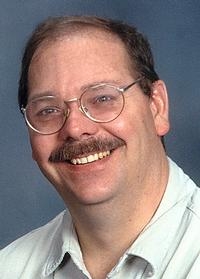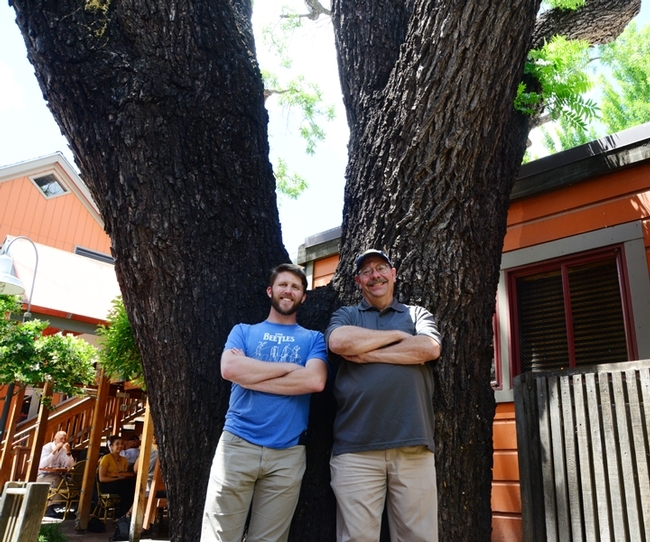
Steve passed away Friday, Nov. 15 at a Sacramento hospital of a heart condition. Born in 1959 in Madison, Wisconsin, he was 60 years old. He was one of the pioneering scientists researching the newly discovered thousand cankers disease (TCD), caused by the walnut twig beetle, Pityophthorus juglandis, in association with the canker-producing fungus, Geosmithia morbida. He was a worldwide authority on the insect, fungus and disease. (See obituary in Davis Enterprise)
In his memory, he was honored with a moment of silence this week at the Entomological Society of America meeting in St. Louis, Mo.
The tributes are pouring in:
Nematologist Steve Nadler, professor and chair of the UC Davis Department of Entomology and Nematology: "Steve was an excellent chemical ecologist whose research on insect pests of trees proved to be of great importance to landscapes throughout North America.”
Chemical ecologist Walter Leal, UC Davis Department of Molecular and Cellular Biology and past chair of the UC Davis Department of Entomology (now the Department of Entomology and Nematology). "Chemical ecology lost a champion, forestry entomology lost an ally, and we will miss a friend and colleague. Steve served the International Society of Chemical Ecology as Councilor, the Journal of Chemical Ecology as Associate Editor, and mentored many undergraduate and graduate students and postdoctoral scholars. He elucidated biochemical mechanisms related to bark beetle pheromones, leaving behind a legacy of papers and review articles, some of which have already been cited almost one thousand times. I copied from him the style of praising colleagues when citing their good work by adding the advert 'elegantly' like in the following sentence. Steve Seybold elegantly demonstrated how bark beetles make their pheromones."
Doctoral student Jackson Audley of the Seybold lab: "Steve Seybold was a brilliant scientist and an integral component of the forest entomology community, especially here in the western USA. I admired the amount of time he spent out in the field. I have often heard it said that once a field biologist obtains a Ph.D., that they often become something of an 'armchair biologist', not Steve. I have never seen him happier than when he was out on long field excursions, hunting down various trees and tree pests. I hope to emulate that characteristic in my own career. Although my time working with Steve now feels cut abruptly and unfairly short, he imparted a great deal of wisdom upon me in that time. I am incredibly grateful to have had Steve as a mentor and a friend. He contributed a great deal to making me into the scientist I am today. He will be sorely missed."
Seybold lab alumnus Andrew Graves (now a zone leader entomologist with the Forest Service, Forest Health Protection, New Mexico Zone): "We are all shocked and saddened. Steve and I worked together for nearly 20 years. A faithful mentor, constant teacher, an incessant researcher to whom the time of day or length of time were meaningless, a good friend who contributed much to our world. A too early passing and a great loss for us all. He was a good man and will be missed by many. If I had to guess, he would've been disappointed he didn't finish that last manuscript."
Seybold lab alumnus Stacy Hishinuma, who went on to accept a position in the Pacific Southwest Region, San Bernardino: "Steve was a pivotal person in my life. I worked with him for more than 10 years and during that time he pushed me to have the highest scientific standards and taught me all I know about research. He was an involved mentor and cared deeply about the success of his students. His love was expressed through the red marks on our manuscripts, the time he spent helping us with presentations, and the pop quizzes on insect identification. When I started graduate school, people advised me to be the first person in and the last person to leave. This was impossible in the Seybold lab since Steve regularly started working before dawn. It was somehow always startling when I would email Steve at 4:00a, before heading to sleep, and he would immediately respond. Steve's work ethic was unprecedented. It was inspiring to see his passion for research. His love for science was only rivaled by his love for his daughters. I'll always miss the conversations we had driving to field sites, eating at his go-to restaurants, and geeking out about bark beetles. Thank you for everything Steve. I hope I can help carry on your legacy through my own work as a forest entomologist."
We knew him as an incredible scientist with an immense curiosity, an outstanding teacher, and a kind and caring friend. A few of the last news stories we wrote about him:
- A Sign of the Times: Why This Black Walnut Tree Is Dying
- Meet the Extreme Insects at the Bohart Museum of Entomology Open House
- Walnut Twig Beetle and Fungus Has Caused 'Profound Damage to Black Walnut Trees
Steve is survived by his widow, Julie Tillman, and daughters Natalie, 11, and Emily, 17. "Steve loved his work and his daughters with his whole self and heart," Julie said. "He will be sorely missed by his family and friends, his lab family and his huge network of professional colleagues."
A visitation will be held from 5 to 7 p.m. Friday, Nov. 22, at Smith Funeral Home in Davis. A service will be held on Saturday, Nov. 23, at Saint James Church in Davis at 10 a.m. with interment at a later date near his father at Forest Hill Cemetery in Madison. Memorials in his name may be made to the American Heart Association, National Parks Conservation Association or the Entomology and Nematology Student Support fund at UC Davis.
Attached Images:
